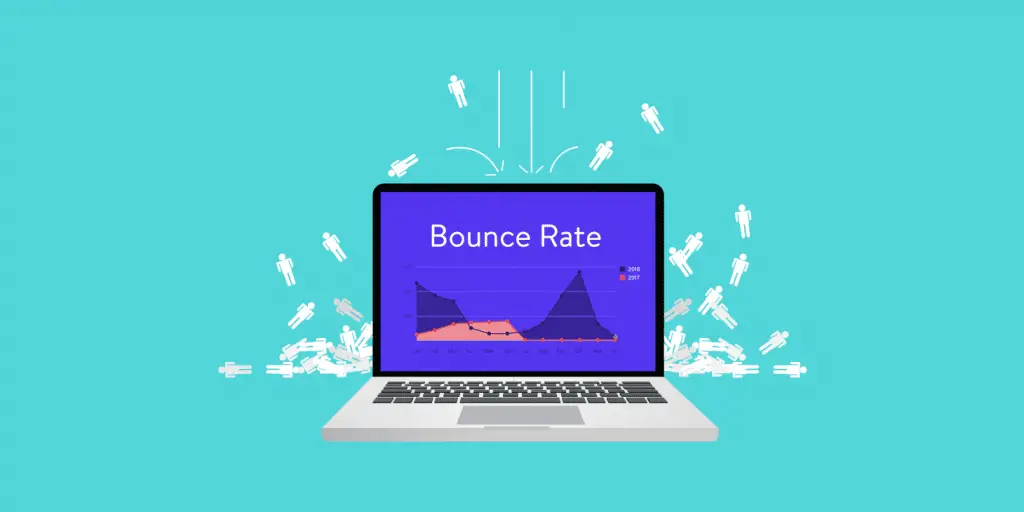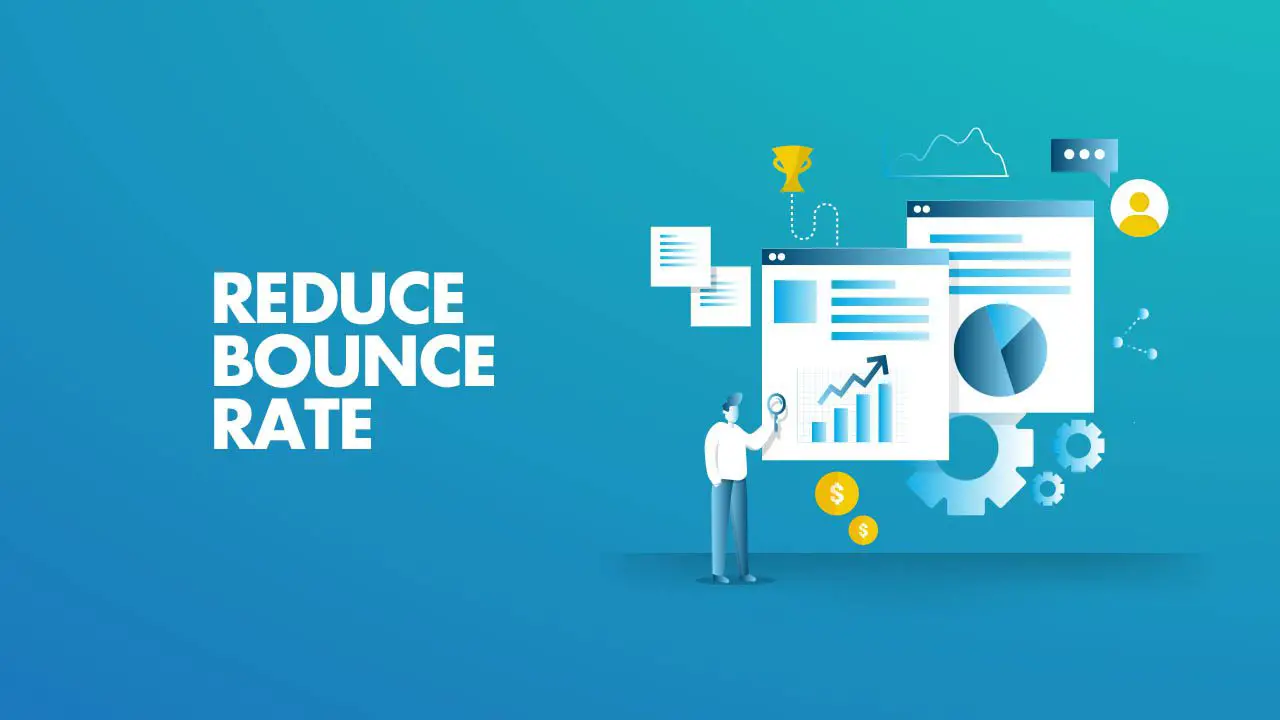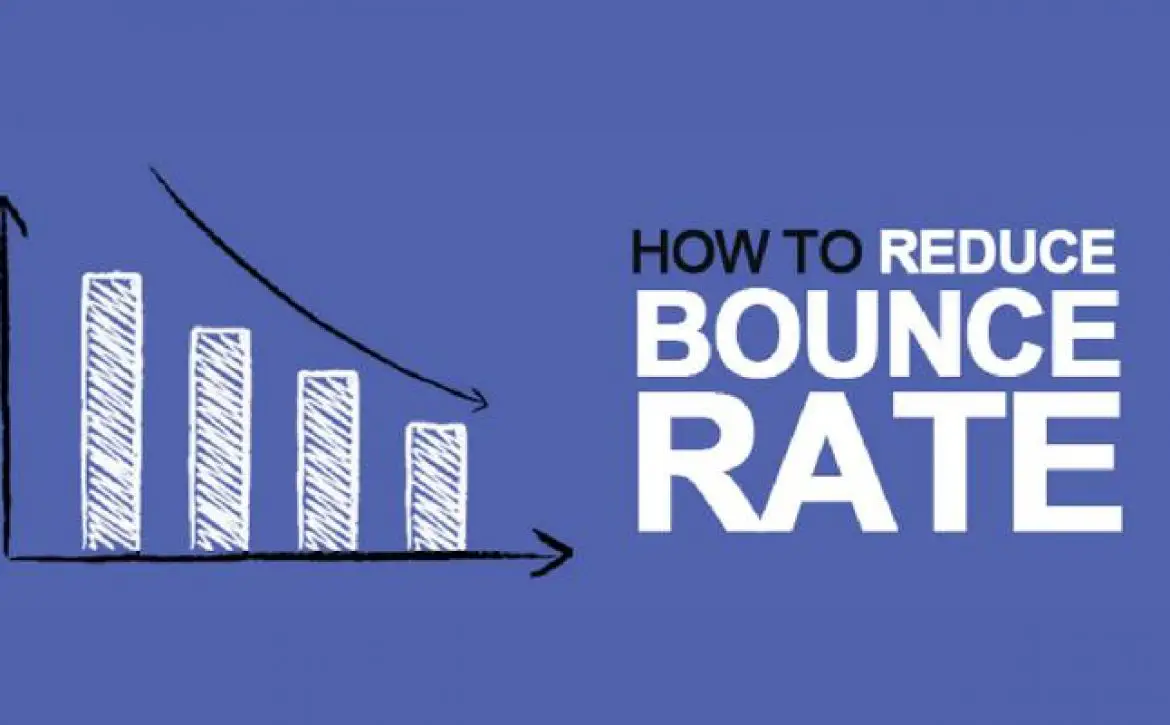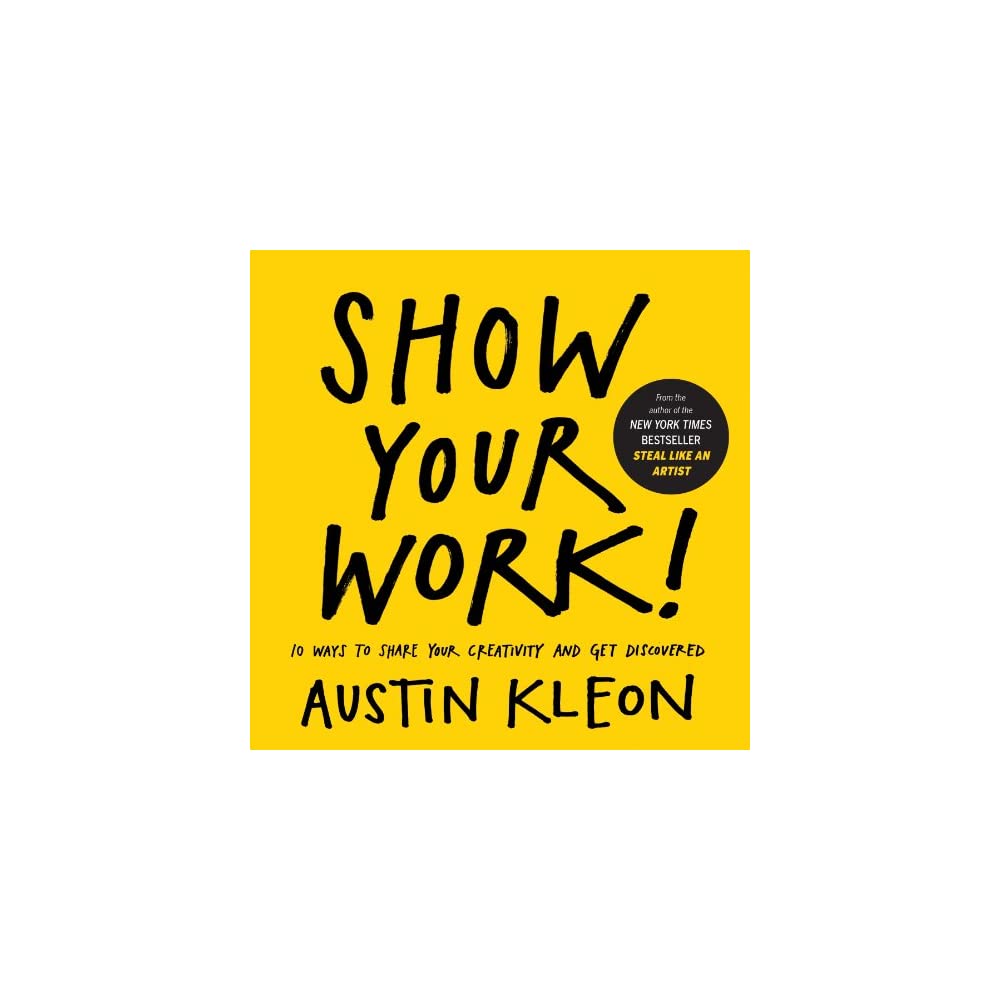How To Reduce Website Bounce Rate?
Today, we will be talking on bounce rates; the meaning of bounce rate, how bounce rates affect your site, and a few ways to reduce bounce rates. Let us dive in!
What does the term, bounce rate, mean?


The percentage of visitors to your website that immediately leave without reading or engaging with any content is known as the bounce rate.
A high bounce rate typically means that visitors are not finding what they are looking for, which can point to an on-page problem (such as a poor navigation structure, irrelevant or poor page titles), or a problem with how well you grab and keep your visitors’ attention with content.
A low bounce rate indicates that more visitors are staying to browse a site rather than departing right away. This is typically regarded as a positive sign for SEO.
Here is what Google says: “When a visitor clicks on one search engine result and then leaves without clicking on any other results, this is known as a bounce. The clicked-on listing may not be highly relevant to the inquiry, which may also explain a bounce.”
Briefly stated, the bounce rate is the percentage of visitors who came to your site but left immediately after reading just one page.
Why is the bounce rate important?


Google has confirmed that they employ this measure as a ranking factor. Yes, even though they are frequently misinterpreted, there are a variety of factors that could influence rankings.
These are believed to consist of:
- Quickly leaving a website rather than sticking around to view additional pages translates to little time spent there and little interaction with the material.
- Google tends to give lower rankings to websites with low average time on site or high departure rates.
- The quality of the user experience and the likelihood that users had clicked on your listing in the search results were likely to be lower the fewer pages that were viewed during a session. In other words, it’s possible that searchers are not quite happy with what they’ve discovered.
Some factors that affect bounce rates
- Sessions are used to track users who land on a page on your website and are used to compute bounce rate. It doesn’t keep track of visitors that come directly to your website or through links from outside sources (i.e., if someone types in “example.com” into their browser).
- Google Analytics determines the percentage of visitors who arrive at your site and immediately leave (i.e., “bounce”) without viewing any additional pages. This information can be used to determine how visitors are interacting with your site.
- The “Bounce Rate” section under “Behavior” on any one of your websites’ dashboards also provides a breakdown by page so you can keep track of which URLs are causing these bounces.
- It may be worthwhile to look into issues like poor internal linking to a page, poor navigation, or even low quality content if this is significantly different from the typical bounce rate for other pages on your website.
- Additionally, if a certain page on your site has a really high bounce rate in comparison to other sites, you may want to look into this further since it may be a sign that you’re having problems grabbing and keeping consumers’ attention (i.e., whether people are finding what they need when they get there).
Why Your Site’s Bounce Rate Should be Low
- Google uses time on site as one of its numerous ranking variables.
- There isn’t much you can do to persuade visitors to stay, when they land on your website. Google advises website owners to aim for a bounce rate of fewer than 50% because of this.
Further Advantages Of Low Bounce Rates
- It may be worthwhile to update the content on the page with the high bounce rate in order to minimize this measure, as your visitors will have a lot better experience if they can discover what they’re looking for quickly.
- From a design and informational viewpoint, bounce rates can provide insight on how much people appreciate your site. Therefore, reducing your bounce rates can still improve customer experience even if you are not concerned with rankings. And is why we are going to look at some ways to reduce bounce rates in the next section.
Some Ways to Reduce Bounce Rates:


As we know now, high bounce rates decrease ranking, and consequently, conversion rates. Now, in this section, we will look at some ways to reduce bounce rates. Below, are some of the ways;
1) Conduct Research
Check to see if the visitors to any of your dashboard pages that have a high bounce rate are actually interested in what you have to offer. Maybe they didn’t know about some components (like navigation) and didn’t find what they were seeking for as a result. This is a chance to conduct some research and determine how to make the page better so that visitors will want to stay.
2) Monitor Linking
You should also examine all of the internal links leading to the page as well as any external links or blog posts that may be directing traffic there (e.g., forums).
3) Improve Content on Page
To improve the content on the page with the high bounce rate, identify the issues visitors are trying to solve offer them solutions. To put it another way, give your users relevant information.
4) Run and Record Tests
Perform user tests and record users attempting to complete specific tasks(such as finding a product, or signing up for an account), to ensure that your site is optimized for success. Then you can search for issues that threaten user experience. Issues like;
- Having difficulty determining where to click
- Inability to locate what they seek, even when it is clearly in front of them
- Exasperation due to slow loading
Make sure you address these issues by making appropriate redesigns, and including links to relevant sites and pages.
5) Check Other Factors
Finally, you may utilize Google Analytics’ other metrics to find any potential problems that may prevent users from staying on your site. Eamples of such are, slow page loading time, broken links, or images without alt text.
Yes! Those are some few ways to reduce bounce rates. Know more? Be free to share! Leave your questions and comments in the space provided below, I’d be glad to indulge you! Gratitude for reading!







